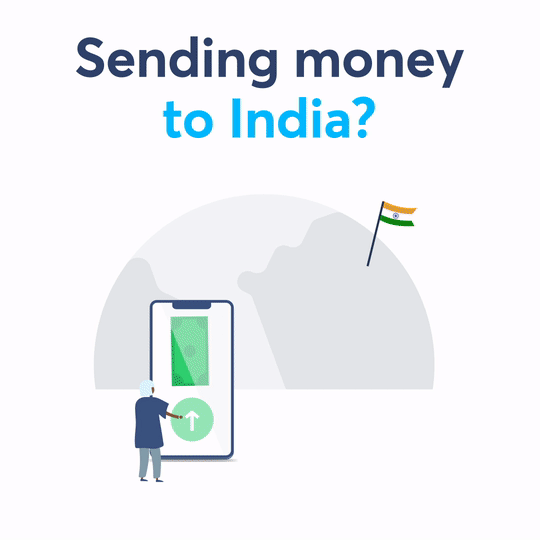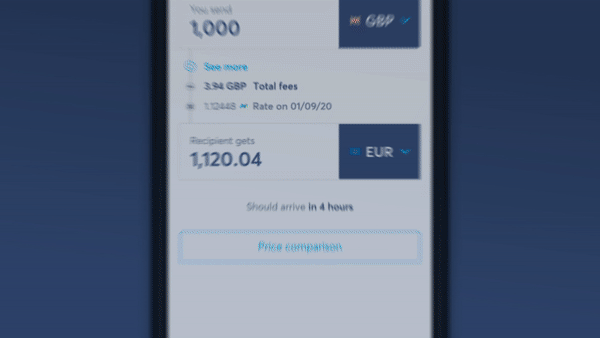Complete Guide to Revolut in India: Upcoming Launch and Services
Revolut is not yet available in India, but you can join the waitlist. Learn about their plans for India and discover Wise as an alternative for money transfers.

Western Union (WU) is such a globally popular option for sending money that the name Western Union is sometimes used colloquially as a verb. If you haven’t “Western Union-ed” money before or received money through the company, this is the article for you. Learn all about how Western Union works in India and what you can expect from this well known American company. You may find that while the cash pickup is an attractive offer, make sure you are aware of the hidden fee with Western Union transfers.
And if you want a digital-first way to transfer money abroad, and receive it here at home, check out Wise. Using smart technology, Wise makes transfers fast, easy and secure to over 120+ countries.
Compare exchange rates with Wise
| Table of contents |
|---|
To receive money from abroad through Western Union is fairly simple, and won’t cost you any money as a recipient. And whether friends, family, or work associates require to send you money, there are a few options for how to receive it. Let’s take a look.
There are 4 different ways to receive money in India through Western Union¹. Your sender will be asked about the mode of delivery, so make sure you let them know your preferred option before they submit their transfer.
You can pick up your transfer in cash from a Western Union agent location across India. You will just have to bring the Money Transfer Control Number (MTCN) and your government-issued ID with you.
One of the easiest options where the funds are transferred directly to your local Indian bank account. You will need to let the sender know your bank account number and the IFSC code, as well as your address and phone number locally. The sender will also have to outline the reason for the remittance.
If you have a Federal Bank of India account, you can access the transferred amount through your online banking. Once you log into your Federal Bank of India online banking account, enter in your sender’s details and the MTCN number. You can then select the account you want the money to be deposited in.
If you have an Airtel wallet, you can receive Western Union transfers directly into it. You will just need to log into your Airtel payment bank account app and then enter in the sender’s details and the MTCN number. You will then need to select your transfer and the account you want it deposited in.
As a recipient of funds, you won’t pay any charges or fees for the transfer.
But there are limitations on how much you can receive. You can only receive at most 30 transfers a year and per the Indian government, you are only allowed the INR currency equivalent of $2,500 USD per transfer. If you are an Indian national, you can only get a maximum cash payout of Rs. 50,000. If you are a tourist in India, there are certain cases where receiving more than Rs. 50,000 is allowed².
The time it takes to receive the money will depend on how the sender has requested delivery. The sender will be informed of the delivery time as they are doing the transfer or when it is approved.
If you have opted for a cash pickup, check your local agent’s days of operation and working hours to make sure you catch them while they are open.
Want an easy, fast, and cheap way to send money from India, and to India, online? Look no further than Wise. With an award-winning app, you can send money to local bank accounts in 60 different currencies. At one low fee and the real mid-market exchange rate on every transaction, it is no wonder over 7 million customers have chosen Wise for their global money transfers.
Open your free Wise account now

Western Union lets you send money abroad from India. But the first step is to get registered on the Western Union website. To register, you will need to be at least 18 years old and have a PAN card. You will also need to fill out your personal details including your annual income, occupation, and nationality.
Next, you will need to verify your profile which you can do at any YES bank branch. Bring along your PAN card and a proof of address for the verification. There is also an online verification with e-KYC where you can input your Aadhaar number. Once you have completed all the steps and are successfully registered, you can send money using Western Union.³
To send money overseas, you can go to your account on your Western Union dashboard and click on Send Money. You will then need to choose your destination country and the sending method. There are 40+ countries that can accept payments from India.
Next, add your receiver and select how the funds are to be delivered. At this point, you may want to check with your recipient about their preferred way to receive the money. You will then need to review the fees, the exchange rate, and details of your transfer, as well as accept the terms and conditions.
You can use Western Union to also make payments to non-individuals, such as businesses, schools, or universities. But the list of accepted countries is limited to the United Kingdom, Australia, Singapore, France, Germany, Ireland, and Italy. When you are selecting the recipient, be sure to click on non-individual. You can then choose the purpose of the transfer accordingly
It is important to keep in mind that there are restrictions on how much can be sent from India to abroad, and it depends on the purpose of the transfer. For education, you can send a max of the currency equivalent of 10,000 USD per transfer. That reduces to 5,000 USD, at the currency equivalent, for other reasons like medical treatment, exam fees, or business travel. This is capped at 250,000 USD per financial year for all transfers. To pay, Western Union accepts bank transfers as payment method.⁴
The fees for sending money with WU are going to depend on a few factors. This includes where the money is going, how much, and how it is delivered. Depending on the nature of your transfer there can be a transfer fee, which is a service charge by Western Union.
The next fee is actually well-hidden. That is because it is in the exchange rate that Western Union offers. WU sets their exchange rates to be different from the mid-market exchange rate, and in that difference, they are able to sneak in a fee. But more on that in the next section.
The process to send money with WU shouldn’t take too long as long as you complete your payment. But the time needed to receive money is going to depend on how and where the funds are being sent. Sometimes it can take as little as 1 business day.
It is easy to track a transfer with WU. You can just head to the website and click on Track Transfer, and enter in your MTCN.
Western Union can be a globally recognized and easy way to transfer money globally but it doesn’t mean it will always be the cheapest option. On top of the transfer fee that may be applied, there is also a hidden fee in the exchange rate with WU.
Western Union sets a different exchange rate than the mid-market rate. The mid-market rate is the rate that banks use themselves to exchange money. It is also the same rate that you usually see on Google, as it does not have a mark-up. When Western Union sets their exchange rate weaker than the mid-market exchange rate, they are able to sneak in a hidden fee in the difference. And that way they are able to take a cut of every rupee exchanged.
So the next time you are looking at Western Union to send money overseas, make sure that you are comparing different providers and keeping an eye on the mid-market exchange rate.

If you are looking for a transparent and upfront money transfer provider that always gives you the mid-market exchange rate, look no further than Wise. With Wise you can send money to local bank accounts in over 40 currencies, all from your phone or computer at home. Plus, you can send up to ₹6.5 lakhs in a transfer with Wise.
It is completely free to open a Wise account, and you won’t have to go to a bank or branch to get started. And once you are signed up, you can pay for transfers using your debit card, credit card, or bank transfer. With every transfer, you will only get one small transfer fee and the real mid-market rate. It is as simple as that.
So if you want a simple, easy, and clear way to send money from India, and also to receive money at home, give Wise a try. Sign up today and see how much you can save today.
Sources used for this article:All sources checked as of 5 June, 2020
*Please see terms of use and product availability for your region or visit Wise fees and pricing for the most up to date pricing and fee information.
This publication is provided for general information purposes and does not constitute legal, tax or other professional advice from Wise Payments Limited or its subsidiaries and its affiliates, and it is not intended as a substitute for obtaining advice from a financial advisor or any other professional.
We make no representations, warranties or guarantees, whether expressed or implied, that the content in the publication is accurate, complete or up to date.

Revolut is not yet available in India, but you can join the waitlist. Learn about their plans for India and discover Wise as an alternative for money transfers.

WhatsApp UPI for India: Can you send or receive money international? Discover limits, safety & Wise as a global transfer alternative.

Complete review of Vance Money Transfer services to India in our guide to that covers their features, fees, and supported countries.

विदेश पैसे भेजने के आसान तरीके सीखें। नकद, बैंक ट्रांसफर, और Wise जैसे ऑनलाइन विकल्पों की जानकारी। फीस और एक्सचेंज रेट समझें।

Review of the best banking choices and alternatives for NRIs in New Zealand with our guide for Indian Expats living in New Zealand.

Complete guide to TCS applicable when remitting from India to cover foreign travel such as for overseas tour packages. We go over the TCS rate and how to claim.